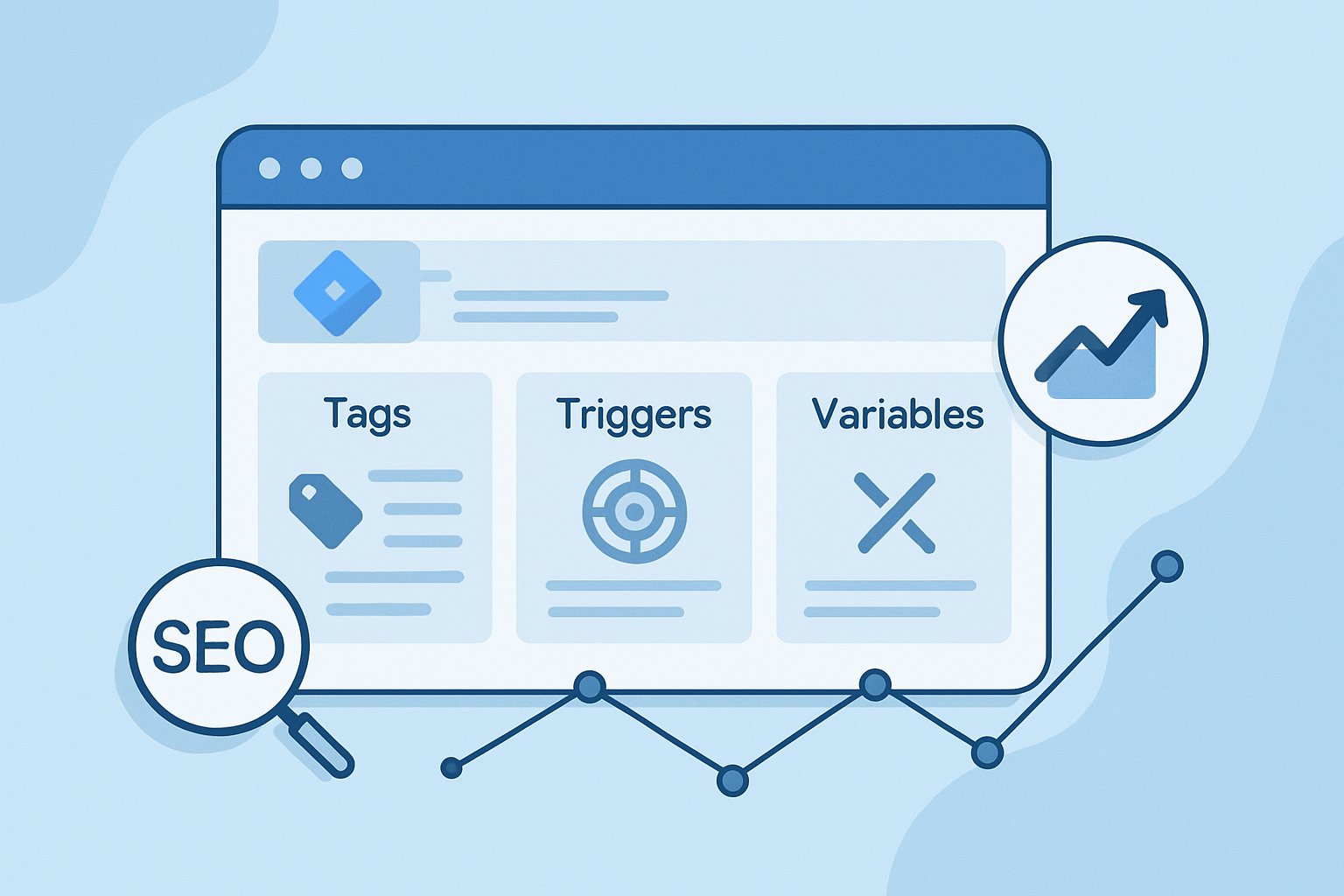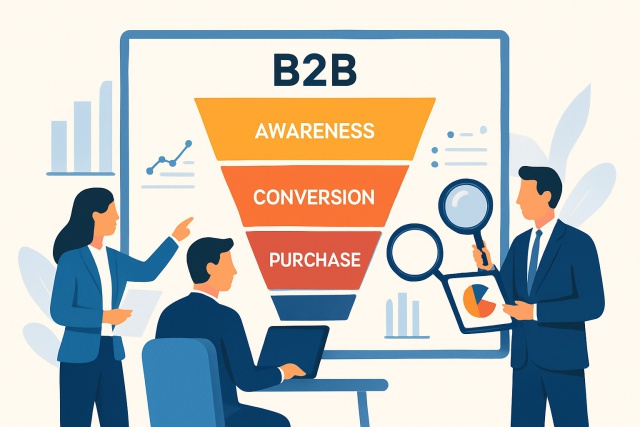Conversion Tracking with SEO Using Google Analytics


Conversion tracking with SEO through Google Analytics is vital for getting a clear picture of how organic search drives key actions on your site. When you nail down conversion measurement accurately it gives businesses the power to gauge how their SEO efforts are paying off, tweak their strategies with confidence and make data-driven decisions that can ramp up user engagement and revenue.
What Conversion Tracking Is and Why It Truly Matters for SEO
Conversion tracking is all about keeping a close eye on those key user actions that really matter to your business—whether it’s someone filling out a form or sealing the deal with a purchase. When it comes to SEO, tracking these conversions lets you move beyond just the usual numbers like rankings and traffic. It reveals the real story behind how organic search is boosting your business growth and giving you a solid return on investment.
- Form submissions happen when users fill out contact or inquiry forms and give you a solid hint at potential leads knocking on your door.
- Phone calls come from visitors who found you via organic search and are often tracked through call tracking tools or GA integrations.
- E-commerce sales driven by organic traffic channels are the bread and butter for any online retail performance and keep the cash flowing.
- Newsletter signups quietly help grow your marketing audience and nurture those leads into something meaningful.
- Engagement metrics like downloads, video views or time spent on a page often serve as subtle clues that users are genuinely interested—sometimes even hooked.
How to Set Up Google Analytics for Tracking SEO Conversions
To really nail tracking SEO conversions, setting up Google Analytics the right way is key. That involves creating an account, adding your website as a property, setting up views and defining goals that line up with what you’re hoping to measure for meaningful reporting.
Set up a Google Analytics account at analytics.google.com and don’t forget to add your website as a new property.
Slap the Global Site Tag tracking code onto every page of your site—this kicks data collection into gear.
Create different views to slice and dice your traffic, like a master view and a sandbox test view.
Flip the switch on Demographics and Interest Reports to peek under your audience’s preferences. This helps with SEO insights.
Define your Goals to keep an eye on conversions—whether form submissions, product purchases, or newsletter sign-ups from organic traffic.
Different SEO Conversions and How You Can Keep Tabs on Them in Google Analytics
You can keep an eye on various types of conversions in SEO by using Google Analytics whether through setting up destination goals, event tracking or e-commerce tracking.
| Conversion Type | Description | Tracking Method in GA | SEO Relevance |
|---|---|---|---|
| Destination Goals | Keeps tabs on when users land on a specific page, such as a thank-you page right after signing up | Set up as a goal using the URL destination | Measures those all-important conversions like lead form completions and purchases |
| Event Tracking | Keeps an eye on user moves like clicks, video plays, or downloads | Set up events with categories and actions | Snags the smaller yet telling conversions that often hint at engagement quality |
| E-commerce Tracking | Follows product sales, revenue, and transaction details | Uses enhanced e-commerce features in GA | Links SEO-driven traffic straight to revenue and sales outcomes, no detours |
| Phone Call Tracking | Spots calls coming from organic visitors, usually via integrations or GA events | Uses event tracking or third-party tools | Vital for businesses that count on inbound calls as bona fide conversions |
| Engagement Metrics | Measures things like how far people scroll, how long they stick around, or if they keep coming back | Uses custom events and goals | Reflects genuine user interest and shows how well your SEO content keeps visitors hooked |
How to Set Up Goals for Tracking SEO Conversions (And Actually Make Sense of the Data)
SEO goals usually cover a range of actions, from the little stuff like engaging with content to the bigger milestones such as making a purchase or filling out a form. Setting up destination and event goals in Google Analytics is a smart move.
Start by clearly defining your SEO conversion goals—whether that’s snagging more leads or cranking up sales or getting your content the engagement it deserves.
Head over to Google Analytics Admin, navigate to Goals and set up new ones based on destination URLs or specific events that really matter.
Make sure each goal has a clear descriptive name you won’t have to second-guess later. If you need to, set up funnel steps to track the twists and turns users take on their way to converting.
Test every single goal yourself. Go through the motions, complete the action and keep an eye on the real-time reports to make sure the data lines up perfectly. A quick test now can save a heap of headaches later.
How to Use Google Tag Manager for Advanced Conversion Tracking A Friendly Guide to Getting It Right
Google Tag Manager really steps up your conversion tracking game by delivering flexible and scalable tag management that can grow with you. When paired with Google Analytics, GTM lets you build pretty intricate tracking setups without the headache of constantly tweaking your website code.
- Set up and manage event tracking for clicks, video plays or form submissions—all without having to bug a developer.
- Add conversion pixels for remarketing and ad tracking tied directly to your SEO efforts to make sure nothing slips through the cracks.
- Keep a close eye on detailed user interactions like scroll depth or button clicks to get a sense of how engaged visitors are.
- Create dynamic goals and triggers that shift and adapt based on user behavior and the pages they explore because one size rarely fits all.

Google Tag Manager interface illustrating setup of advanced SEO conversion tracking tags and triggers
Getting to Grips with SEO Conversion Data in Google Analytics
Google Analytics serves up a bunch of reports that really help SEO pros get a handle on conversion data. These reports tie organic traffic trends to the big-picture business results, making it easier to make smarter calls that boost both SEO strategies and the user experience.
- The Acquisition > All Traffic > Organic Search report digs into the nitty-gritty, showing which keywords and landing pages are really pulling their weight when it comes to driving the best conversions.
- The Goals Overview dashboard lays out a clear snapshot of overall conversion rates and goal completions that spring from organic traffic—great for keeping an eye on the big picture.
- Multi-Channel Funnels paint a vivid visual picture of the winding paths and multiple touchpoints that lead to conversions, spotlighting all those behind-the-scenes SEO efforts that often don’t get the final click but still make a difference.
- The Assisted Conversions report shines a light on how SEO channels chip in to the conversion game, even when they are not taking the curtain call as the last interaction.
Understanding Attribution Models and How They Affect SEO Conversion Tracking a Slightly Tricky Yet Essential Tale
Attribution models in Google Analytics give credit where it is due, assigning value to various channels based on conversions. Getting a solid handle on these models is pretty key for SEO individuals because they ultimately decide how much of the spotlight organic search steals compared to other marketing channels along the winding customer journey.
| Attribution Model | Description | SEO Impact Considerations |
|---|---|---|
| Last Interaction | Assigns full credit to the final channel before conversion | Often overlooks SEO's earlier efforts when it nudges the customer down the path but does not close the deal |
| First Interaction | Gives credit to the first channel the user engaged with | Shines a spotlight on SEO’s role in planting the seed during initial awareness—pretty vital for brand-building, if you ask me |
| Linear | Splits credit evenly across all touchpoints | Provides a fair shake all around, though sometimes it waters down the standout moments when SEO truly shines |
| Time Decay | Weights interactions closer to conversion more heavily | Can downplay SEO if it kicked things off way before the conversion actually happened—patience is a virtue here! |
| Position Based (U-Shaped) | Assigns 40% credit each to first and last interactions, 20% to others | A neat middle ground that gives SEO credit where it’s due: both at the start to spark interest and at the finish line |
| Data-Driven | Applies machine learning to distribute credit based on real data | Usually the sharpest tool in the shed, but only if there’s enough data to back it up; it really nails the true SEO impact |
Improving SEO Approaches with Conversion Insights A Fresh Take
Using insights from conversion tracking gives businesses a real edge to fine-tune their SEO strategies in ways that often lead to a nice bump in conversion rates. Whether it is tweaking keywords just so or smoothing out the user experience, these smart data-driven tweaks help squeeze the most out of organic search efforts.
Kick things off by pinpointing and prioritizing those keywords that have a real knack for converting. Use trustworthy tools like Semrush’s Keyword Magic Tool to focus on the search queries that deliver the biggest impact.
Double-check that your landing pages truly align with what users want. Ensure your content and calls to action reflect the insights your conversion tracking data reveals about user intent.
Roll up your sleeves and work on improving site speed and mobile performance. This is the secret to reducing bounce rates and making the visitor journey smooth and enjoyable.
Don’t underestimate the power of extra internal links. They act like breadcrumbs that spread SEO value and gently guide users toward the pages designed to close the deal.
Adjust your calls to action by watching user behavior closely. This approach helps guide conversions clearly while smoothing out any bumps along the way.
Common Challenges and How to Troubleshoot Conversion Tracking in SEO (Without Losing Your Mind)
Conversion tracking can occasionally hit a few bumps in the road like inaccurate data from setup hiccups and the headaches of tracking across various domains. Bot traffic can throw off the numbers and data sampling causes quirks in larger accounts.
"Accurate conversion tracking is absolutely vital for any SEO strategy worth its salt. By regularly auditing your setup, nailing down cross-domain tracking just right, and cutting out bot traffic, you’re giving your data the spring cleaning it desperately needs. Trust me, this turns your analytics from a jumble of numbers into a powerhouse that can really drive growth." – Digital Analytics Expert
Case Studies That Show How SEO Conversion Tracking Really Pays Off
Many businesses have taken a real leap forward with their SEO results by smartly using conversion tracking in Google Analytics. Time and again these stories highlight how zeroing in on data-driven insights boosts sales, pumps up lead generation and powers local SEO campaigns that deliver clear measurable results
- An e-commerce store noticed a nice bump in online sales after laying out clear conversion goals and sprucing up their product pages thanks to insights gleaned from GA e-commerce tracking. It’s amazing what a little data-driven tweak can do.
- A B2B company upped their game in lead quality by digging into the conversion rates of form submissions linked to organic keywords. Sometimes the smallest details turn out to be game changers.
- A local service provider didn’t just sit back—they boosted their visibility and saw phone call conversions climb by keeping a close eye on call events and fine-tuning their local SEO strategies. It’s like giving their business a friendly nudge in the right direction.

Visual data showing increased SEO-driven conversions from real-world examples using Google Analytics
Conclusion Getting to the Heart of SEO’s Real Value Through Careful Conversion Tracking
Accurate conversion tracking with Google Analytics plays a important role in solid SEO strategies. When businesses take the time to dig into these insights they often discover ways to boost their organic search performance and fine-tune the user experience. This leads to noticeable growth.
Unleash Your SEO Prowess with Semrush
Are you struggling to boost your online visibility and drive more traffic to your website? Semrush is the ultimate SEO and digital marketing tool that can take your Internet Marketing game to new heights. With its powerful suite of features, you can gain a comprehensive understanding of your market, optimize your content, and outrank your competitors.
- Uncover Profitable Keywords with Advanced Research
- Analyze Your Site's Health with Detailed Audits
- Monitor Backlinks and Stay Ahead of Competitors
- Streamline Content Creation with Insights and Trends







